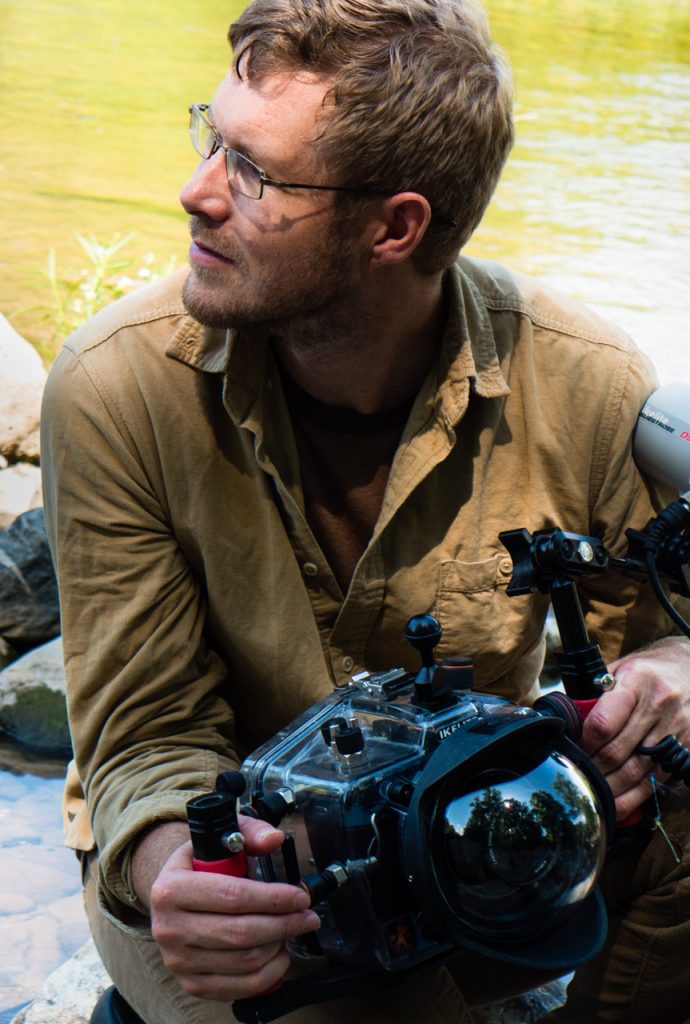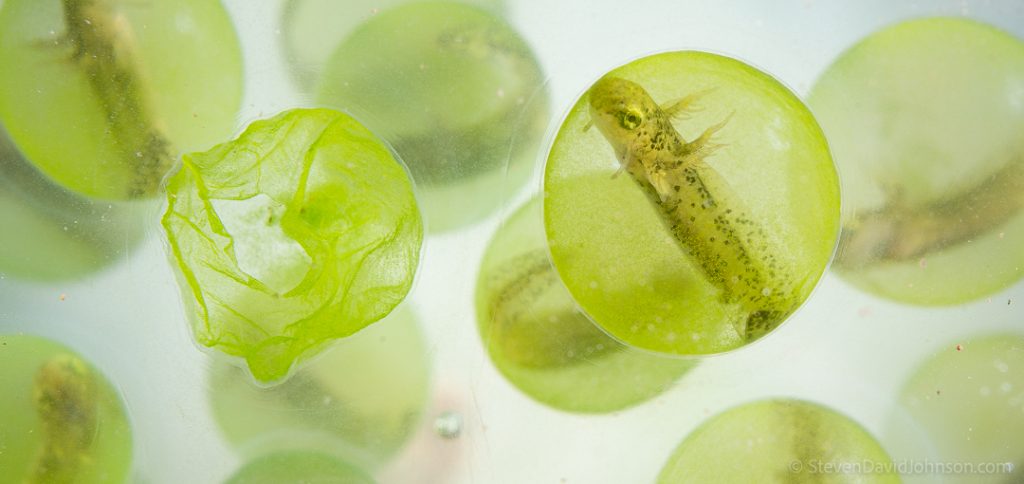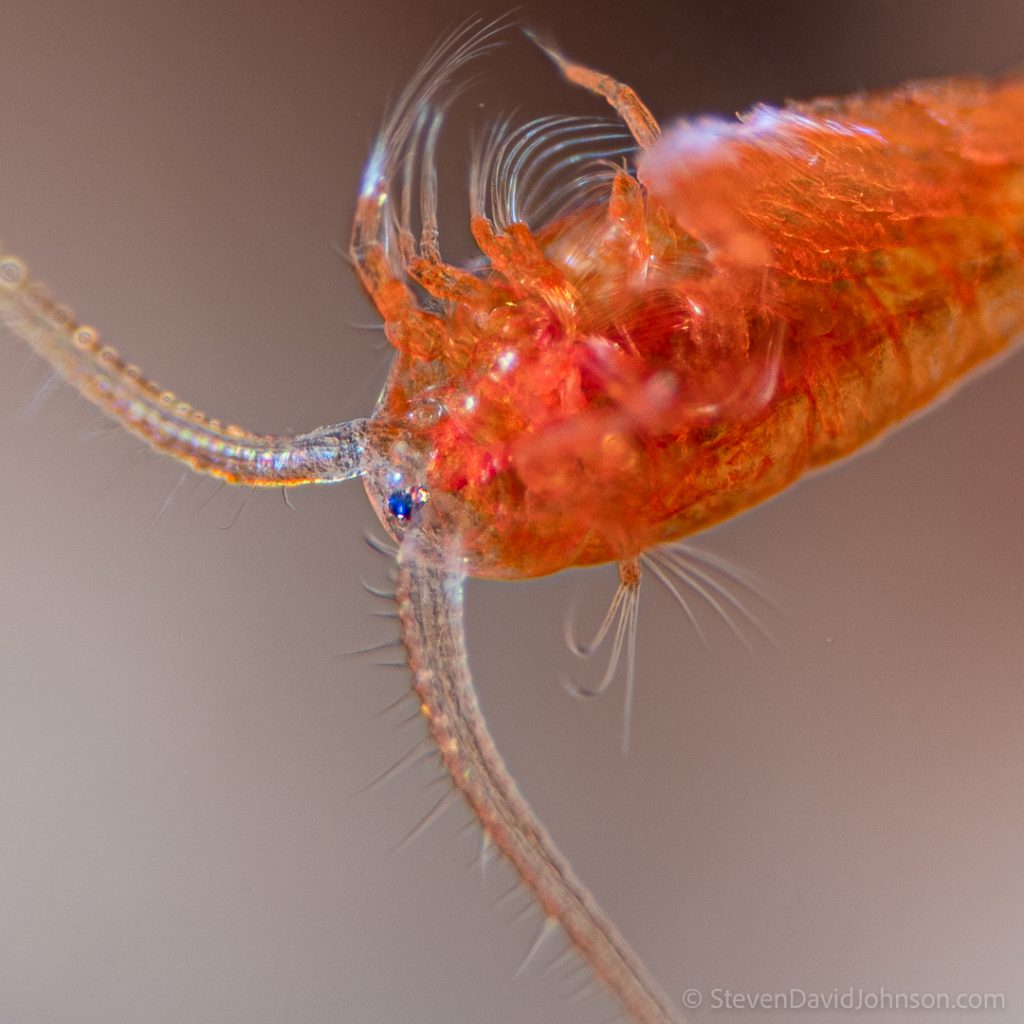Professor Steven Johnson is pushing the frontier of conservation photography – by entering “toad time.” He explains: a toad could sit on a rock for six or seven hours, seemingly doing nothing the entire time. If you blink for a split second, you might miss its tongue darting out, snagging a wayward fly before going still again.

That level of patience and focus is how Johnson photographs the fantastical, intricate world of vernal pools. Johnson, who teaches photography at Eastern Mennonite University, devoted his recent sabbatical to advance his multi-year project – inventing new ways of using equipment to immortalize ethereal salamander egg masses and alienesque macroinvertebrates.
“When sunlight filters through Spotted Salamander eggs, it illuminates them in delicate shades of blue and green like an aquatic Vermeer painting,” Johnson says.
Vernal pools are unique ecosystems that fill up with rainwater or snowmelt in the spring. They dry up and disappear at some point in the year, which prevents fish from inhabiting them. That allows for other species to flourish, such as salamanders that use the pools as a breeding ground, and tiny critters like copepods and fairy shrimp.
Johnson mostly finds the pools in Rockingham and Augusta counties, either by word of mouth or exploration. He’s taken a few trips farther afield, including one out to the Virginia coast to track down the rare Mabee’s salamander.
Currently, Johnson is putting together an e-book for the North American Nature Photography Association on techniques people can use to document vernal pools in their own “neck of the woods.” In the last year, he’s also contributed to the new Guide to the Salamanders of Virginia published by the Department of Wildlife Resources, written about his work for The Mennonite, been the featured guest on “Impact: the Conservation Photography podcast,” and had his photos featured in articles about the Atlantic Coast Pipeline and biodiversity in Appalachia.

One project Johnson is especially excited about is a collaboration with friend Alex Wiles: a highlight video of footage from this year’s “pool season” titled Ephemeral, available for viewing on his website.
Johnson says “the Ephemeral video depicts the intricate world of biodiversity that exists just below the surface of the vernal pools that form in our forests.”
Besides the unique biodiversity of these elusive aquatic environs, Johnson is drawn to the technical challenge of capturing these images. This requires freshwater ultra macro photography – immersing equipment underwater that greatly magnifies the subject. It’s challenging, and Johnson is a pioneer of the field, which is why his work looks unlike most any other nature photographs you’ve seen before. He’s done extensive research to this end to set up his own underwater rigs, and corresponded with companies to see just how far he can push the limits of their equipment.
“Imagine trying to get a sharp photograph of a single tiny bird in a fast-moving flock during twilight,” Johnson says. “That’s similar to the kind of challenge I have when photographing a miniscule copepod swimming through a vernal pool. It takes a lot of experimentation and patience to get it right.”
The life of vernal pools is cyclical – filling, harboring life, and then disappearing each year. Rather than becoming repetitive, though, Johnson said this ongoing work is more like a “spiral,” as he goes deeper and documents new creatures, behaviors, and moments each year.
“Each year, the life cycle of vernal pool creatures repeats, but I also observe and learn more each year, so it’s kind of an upwards spiral of learning,” says Johnson.


Such beautiful photography! The video is gorgeous also. “Ephemeral” captures the fleeting nature of these little ecosystems, so tiny, complex, and miraculous.
You’ve captured a world that most of us do not see. Thank you for this gift of spiritual awe and wonder.
👍🏽👍🏽👍🏽